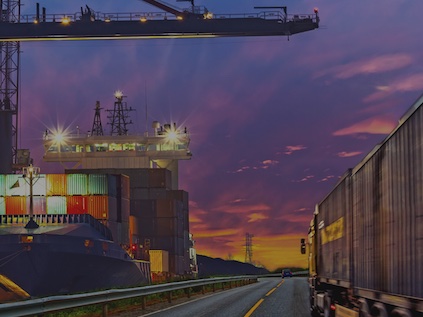
We’ve recently read a host of articles tracking the rise of 3rd party food delivery and chronicling their impact on the restaurant industry. The market for third party delivery has grown explosively over the past few years, driven by Uber Eats and DoorDash. DoorDash in particular has grown 189 percent year over year, per Second Measure, and has risen four funding rounds in the past 14 months.

This explosive growth is leading to disruption. A recent New Yorker article titled “How Delivery Apps May Put Your Favorite Restaurant Out of Business” highlighted the seismic shift delivery represents to restaurants, with the growth proving vanishingly hard to tie to increased profits. All this begs the question – what does this mean for turnaround professionals and their restaurant clients? We began our approach to answering this question by examining the fundamental issue of – what is the impact of delivery on restaurants, both economic and other? Here is what we found.
First, let’s follow the money…
To understand the impact of delivery on both the restaurant and the customer, let’s use the hypothetical of a $10.50 hamburger delivery order. With that order, the customer generally pays a service fee of 15%, a fixed delivery fee around $0.99, and taxes of around 9%. This totals an approximate 33% customer “surcharge” of $3.50, bringing the total order cost to $14. Pretty straight forward.
The restaurant view of that same hypothetical hamburger delivery order could look a bit like this:

Assuming 30% of revenue for food and labor costs (as an example imagine an $18 an hour employee spending 5 minutes prepping and 5 minutes packaging / expediting the hamburger for a labor cost of $3 or ~30% of sales), 5% for packaging and utensils, and a whopping 30% for delivery fees, our hypothetical restaurant’s contribution margin on that hamburger is just $0.55, or 5%. Furthermore, that $0.55 would go to pay for a share of rent, utilities and other fixed costs to operate the space that would, when all added in, likely make our hamburger order unprofitable. To make things worse, many of these delivery sales are likely cannibalizing purchases in the store, including high margin alcohol sales, which only exacerbates the problem. Before delivery, restaurants generally produced a 10% profit margin, so every delivery order that now replaces an in-store sale reduces a restaurant’s already slim profits.
Simply put, delivery is placing extreme margin pressure on a business that has historically operated at fairly low margins. This inevitably changes the way a restaurant needs to think about its current operations and go-forward strategy.
You’re damned if you do, damned if you don’t…
Understandably, restaurants have recently looked to delivery as an easy way to boost sales and expand their customer base in a retail environment that is currently in a state of disarray. In addition, many restaurants are looking for near-term sales bumps to counteract the decline in traffic they are seeing in their stores and relieve some of the cash pressure that they are experiencing from over-levered balance sheets. Delivery DOES provide that initial pop of new customers, which helps stem year-over-year comp deterioration, BUT can be short-lived and comes at a significant cost beyond the delivery fee itself (to be addressed later).
From our conversations with industry leaders, restaurants typically see their sales flatten or even decline after their “honeymoon period” with delivery apps as these “new” customers eventually migrate to other brands. The customer’s loyalty ends up not being to any particular restaurant, but to the delivery app itself, where customers can find a breadth of new offerings from which to choose. Additionally, in situations where the product is fairly undifferentiated (a hamburger from Red Robin, for example), the restaurant risks a “race to the bottom” trying to be the one who can deliver the cheapest or the fastest burger.
The cost of delivery is far greater than just the delivery fee itself. First, as described above, delivery likely cannibalizes higher-margin in-stores sales with a lower margin channel. Second, few delivery orders include alcohol, either due to consumer preference or regulation, which tends to be significantly higher margin. Third, relying on a third party requires sacrificing some control over customer experience. Every time a restaurant’s food shows up late, or cold, its brand equity is at risk. Finally, and perhaps most importantly, restaurants that rely on delivery lose a direct connection to their most valued customers in the form of their data, which they relinquish to the delivery app. While this is also true of in-person reservations made on sites like OpenTable, here the restaurant never even gets a chance to meet the customer face-to-face. “Many operators currently look at delivery services as a cost of doing business. However, there is beginning to be some pushback on this notion as more brands are analyzing the total costs to their businesses of using third party delivery services and comparing that to the benefits, financial and otherwise, of the revenue stream.” Industry expert David Lloyd, former CEO of Bertucci’s and board member at Papa John’s America.
Unfortunately, despite these costs, there are few viable options to working with a third-party delivery service. First, a restaurant may choose to bring delivery in-house. This requires significant scale, as there are hefty development costs and numerous operational complexities, making it an impossible consideration for all but a few large, operationally excellent chains (e.g. Panera and Jimmy John’s). Second, there are local delivery apps that offer lower delivery fees, like Caviar and Postmates. However, these services generally only serve urban locations, and may not be feasible for restaurants serving suburban markets (as most chains do). Third, some restaurants have started “ghost kitchens.” These delivery-only operations have no “front of house,” and thus can operate in much cheaper real estate, require less capital, and are less expensive to operate. However, these require significant costs to start up, and are unproven at scale.
Recently, major chains like McDonalds and Applebee’s have taken the fight to the delivery service companies. The scale of these restaurant chains provides negotiating power, which, coupled with increased competition in the delivery space, has allowed for some discussion on reduced fees, but it is yet to be seen if these fee reductions will trickle down to smaller chains or those with lower bargaining power.
So, what should a restaurant operator do to combat the delivery impact…
(1) Like any good operator, start with isolating and understanding the economic impact of this new reality to your business. Begin with fully loading the in-store and delivery P&Ls and determine where there may be stranded costs to eliminate (e.g. # of servers/dishwashers, utensils, marketing budget).
(2) Reduce or optimize costs to provide some breathing room to help weather the impact of delivery on the business.
(3) Consider charging higher prices for delivery items (where possible)
(4) Generate an enhanced menu strategy, including streamlining your delivery product offerings by focusing on what travels well, is a best seller, and is hopefully higher margin.
(5) Focus on product profitability, for example, make sure proteins are priced right, and if the margin isn’t there, consider cutting it from the menu.
(6) Rethink portion sizing to optimize costs and ensure meals are appropriately sized for delivery and in-store.
(7) Emphasize selling high-margin sides and add-ons to offset the lost margin from delivery sales.
(8) Lastly, consider rationalizing the store footprint. If 20% of the business is now take-out, it stands to reason, that 20% of the real estate footprint should be focused on delivery and distribution.
Undoubtedly, these initiatives require a considerable investment of time, resources and focus from management teams that are likely already stretched and given the disruptive forces at play within the industry, there is no easy fix. Restaurants operators need to act quickly and decisively to weather these disruptive forces, and bringing in outside, independent expertise could be the best way to drive the dramatic change needed to do just that.
—
Author Credits:
Tanner MacDiarmid is a partner based in San Francisco.
Kyle Sturgeon is a partner based in Atlanta.










